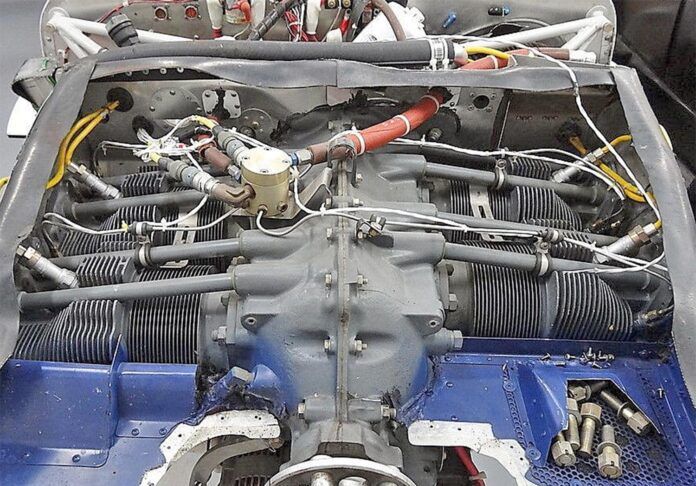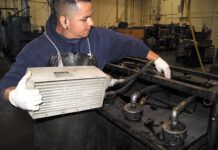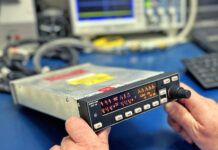This month’s Ask a Tech Q&A comes from the owner of a Piper Arrow with a freshly overhauled Lycoming IO-360-B1E engine with low fuel pressure and IA Mike Berry had some useful advice. Larry Anglisano offers guidance on chasing the static system leak. First, the fuel pressure problem.
“For fuel pressure, the book calls for 20 PSI and I only get 15 PSI. The engine was overhauled using new cylinders, new cam and lifters, a new fuel pump, all rebuilt accessories and the fuel system was completely overhauled by a well-regarded shop. The fuel boost pump is confirmed good, as is the fuel pressure gauge.
“I have spoken to the repair shop twice and checked what they suggested; plus, I sent them the fuel servo for a recheck. I have checked the fuel pressure at the hose coming out of the servo and it is still at 15 PSI. The shop thinks I have an air leak somewhere. I have a complete new hose kit, so I doubt that there is a leak.
“During the first seven or so break-in hours, the fuel flow as measured on the Shadin fuel computer has been normal. I have checked everything I can think of and consulted with two other good mechanics, but I’m just lost.”
Fuel pressure to the servo is regulated by the action of the engine-driven boost pump. It is a self-regulating assembly that pulls fuel from the tanks, through the selector valve, through the boost pump and finally, through the gascolator.
Certainly, any leak that allows air to be pulled into the system will have some impact on the output of the engine-driven pump. Likewise, if a restriction in the fuel-tank vent system is experienced, a loss in flow will occur as well. Hose delamination, kinking or any anomalies associated with a restriction (like an improperly operating fuel valve) can have the same result.
The fuel flow from the servo would not be affected by a change or loss in fuel pressure because the servo can accommodate inlet pressures that vary from 8 PSI to 30 PSI without a change or interruption in flow rates. Inducing air to the system usually results in surging of the engine. I assume this isn’t the case with your IO-360.
If the output of the electric boost pump brings the pressure up to the normal levels, then your engine-driven pump is either weak (or leaking internally), or there is some restriction to fuel flow from the tank. Check the vent system and work toward the engine.
If the boost pump does not bring the pressure up, then it’s possible that there is still some restriction in the fuel-delivery system, or the filter in the servo inlet may be clogged. I would certainly look at the interior of all fuel supply lines for delamination or loose flap-type material causing some flow stoppage.
It should be noted that in the past, there were reports of AC-style fuel pump failures due to low output. It was also reported that some pumps were improperly identified. Disassembly of the failing pumps revealed no operational or mechanical problems. Go figure. Also, be aware that fuel pressure that varies with altitude can be the result of a plugged vent hole in the engine-driven fuel pump or it can be a loss caused by too much crankcase pressure affecting the fuel pump arm and diaphragm.
“I bought an old Cherokee 140 that has been sitting for a couple of years and my avionics shop said it can’t sign off on the two-year FAR 91.413 IFR certification because of excessive static system leakage. The shop replaced several pieces of pitot and static lines and fittings, replaced the airspeed indicator and VSI because both instruments had excessive case leakage and even replaced the altitude encoder in case it was leaking internally.
“What confuses me and sounds odd is that the shop suggested I bring the airplane to a maintenance shop to have a fuel tank removed for further inspection. What’s that all about?”
If the shop has confirmed that none of the static lines and fittings (and instruments) are the cause of the leakage, then a process of elimination could certainly point to issues with the lines running out to the pitot tube. And yes, accessing that portion of the system requires removing the left fuel tank.
The static system originates from a hole in the aft edge of the pitot mast and both the static and pitot pressure lines are routed inboard of the wing root where they connect to flexible hoses that ultimately feed the rest of the system in the interior sidewall, then routing to the airspeed indicator.
Unfortunately, fixing pitot/static system leakage is labor intensive and pretty common in the aging fleet of aircraft.





